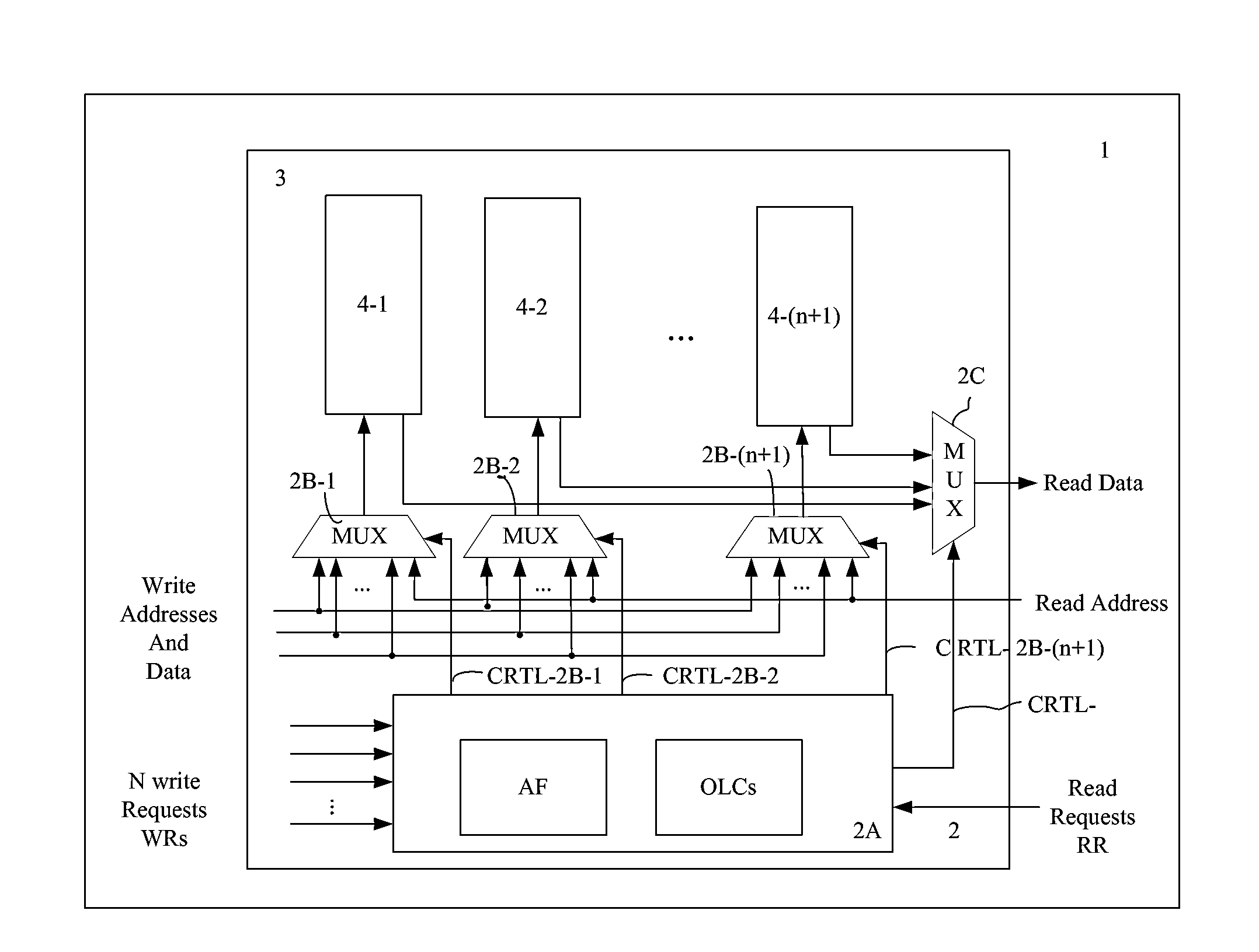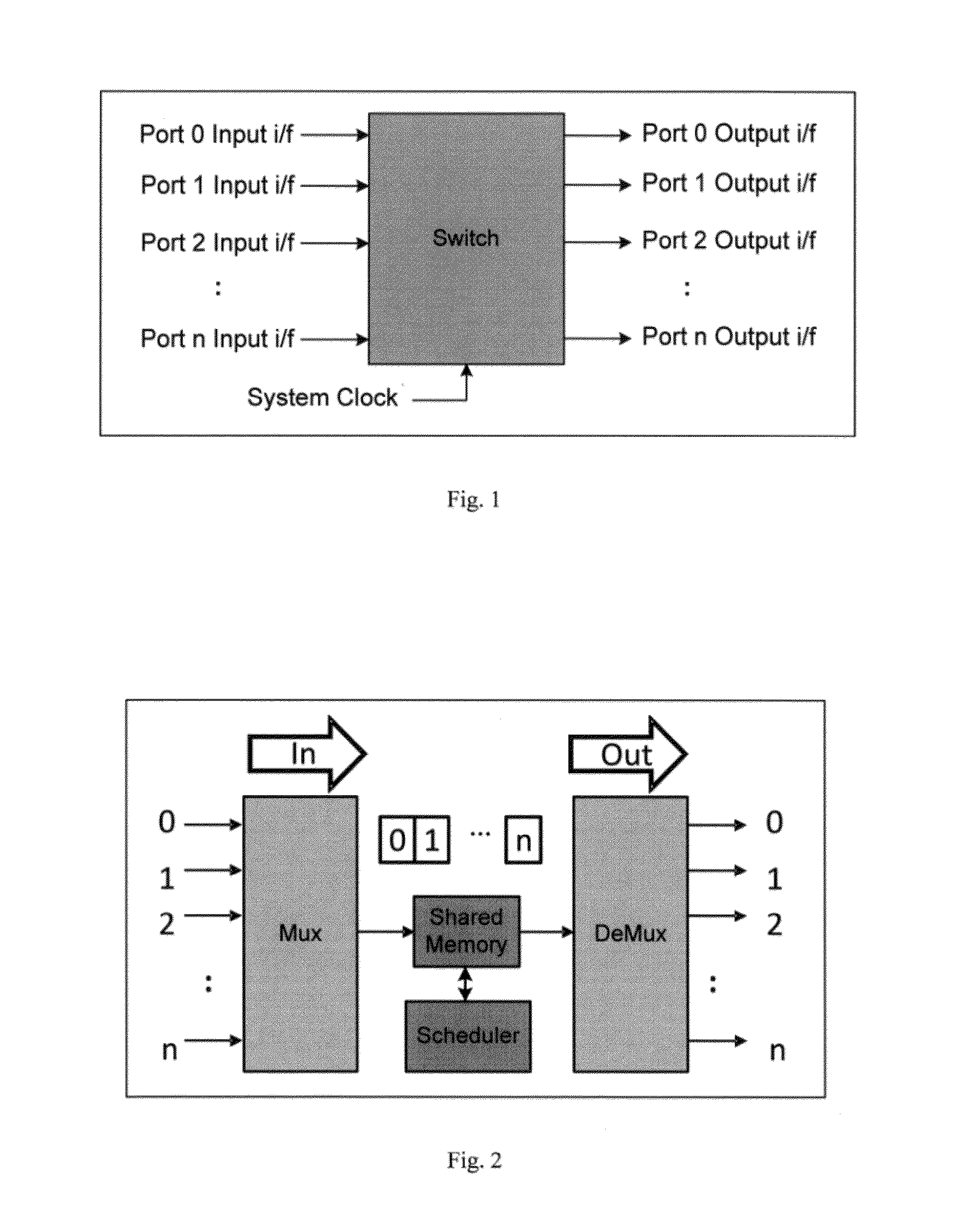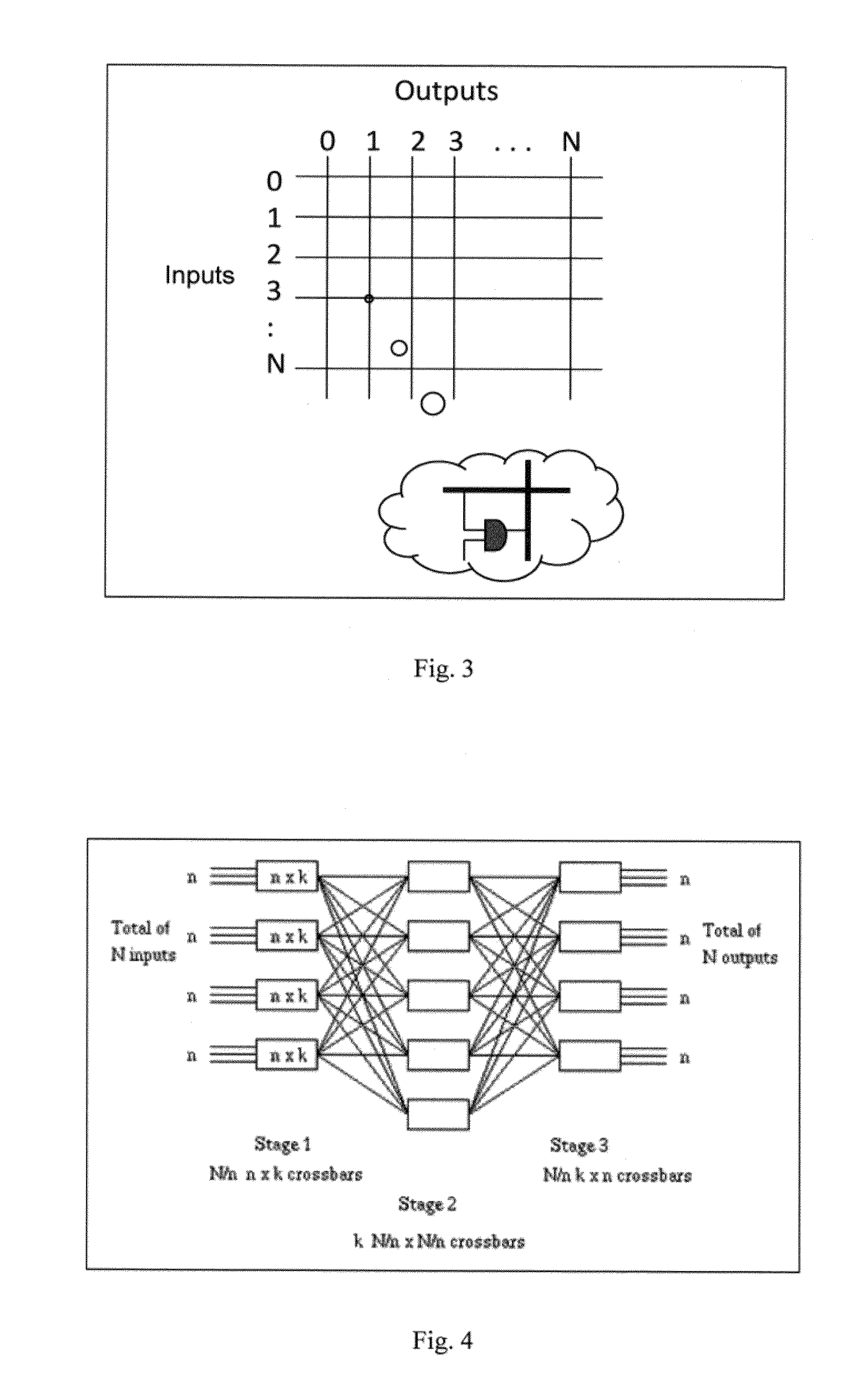Method and apparatus for storing data
- Summary
- Abstract
- Description
- Claims
- Application Information
AI Technical Summary
Benefits of technology
Problems solved by technology
Method used
Image
Examples
Embodiment Construction
[0064]As can be seen from FIG. 5 showing a possible implementation of a memory system 1 according to a first aspect of the present invention the memory system 1 comprises a control logic 2 and a shared memory 3. The shared memory 3 comprises a predetermined number n+1 of memory banks 4-1, 4-2, 4-3 . . . 4-(n+1) as illustrated in FIG. 5. The shared memory 3 is adapted to store data. The shared memory 3 comprises in the shown implementation of FIG. 5 n+1 memory banks 4-i. As can be seen from FIG. 5 the control logic 2 has individual access to each memory bank 4-i of the shared memory 3. The control logic 2 is adapted to control a memory bank occupancy level MBOL of each memory bank 4-i within the shared memory 3. As can be seen in FIG. 5 the control logic 2 is adapted to receive a number n of write requests WRs from input ports and to receive a read request RR from an output port within a clock cycle of a clock signal CLK applied to the memory system 1. The control logic 2 is adapted ...
PUM
 Login to View More
Login to View More Abstract
Description
Claims
Application Information
 Login to View More
Login to View More - R&D
- Intellectual Property
- Life Sciences
- Materials
- Tech Scout
- Unparalleled Data Quality
- Higher Quality Content
- 60% Fewer Hallucinations
Browse by: Latest US Patents, China's latest patents, Technical Efficacy Thesaurus, Application Domain, Technology Topic, Popular Technical Reports.
© 2025 PatSnap. All rights reserved.Legal|Privacy policy|Modern Slavery Act Transparency Statement|Sitemap|About US| Contact US: help@patsnap.com



